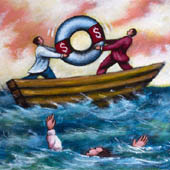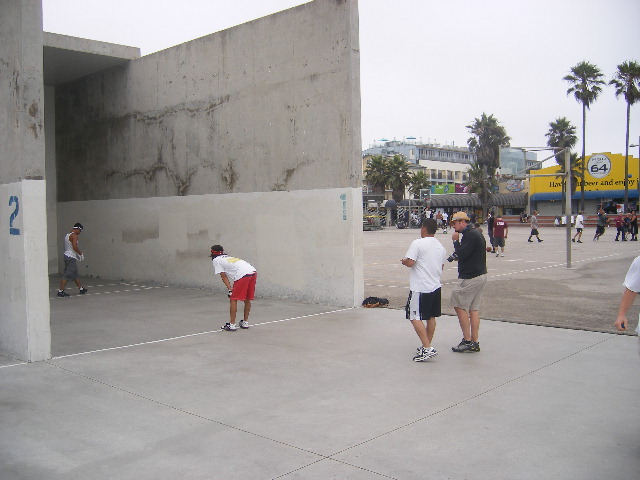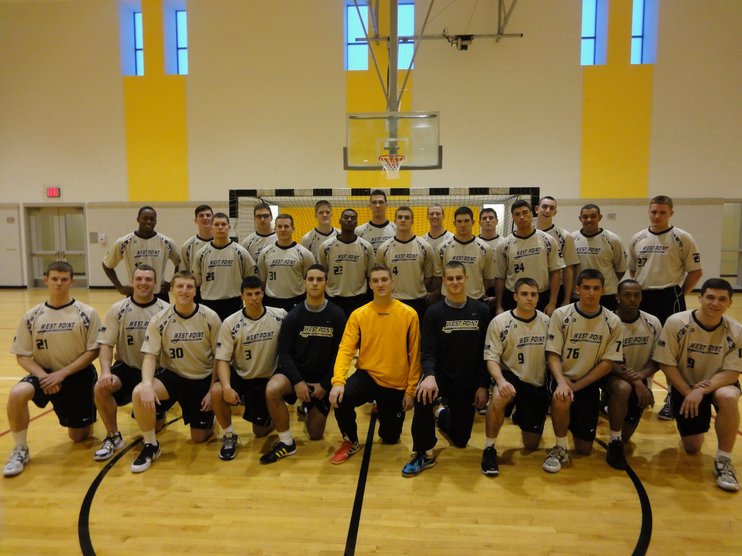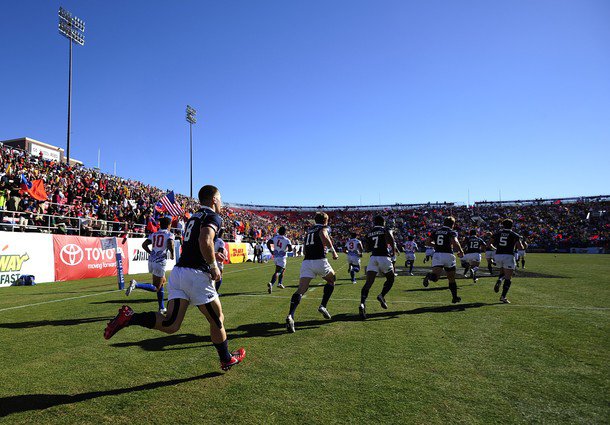In the past couple of weeks both the USA Team Handball Chairman of the Board of Directors (Dieter Esch) and General Manager (Steve Pastorino) have submitted their resignations. Jeff Utz, will reportedly take Esch’s Board role, while Dave Gascon has taken Pastorino’s GM position on an interim basis. It was a quiet, unceremonious departure for two key players who led the federation from its rebirth in 2008. Here’s a brief look back at those 3 years and what may have led to their departure.
Initial Promise and Optimism
Nearly 3 and a half years ago I first had the opportunity to meet Dieter and Steve at the USA Team Handball Summit in St Louis. This summit was essentially a kick off meeting for the new federation and a chance for a few long time followers of the sport to share thoughts and ideas with the newcomers who were looking to move the organization forward. Looking back on my notes I’m struck by the mixture of skepticism and optimism from that meeting. I had my doubts, but based on decades of mediocrity (at best) and failure, it was clear in my mind that a fresh look from new players just might have a chance at taking the sport to another level in this country.
The Great Recession and Grand Plans go Awry
About 3 months after the summit, however, the collapse of Lehmann Brothers and the U.S. Financial Markets signaled that the boom was over and that the USA was in the midst of an economic downturn it hadn’t seen since the 1930’s. This Great Recession can’t be blamed for all of USA Team Handball’s problems, but it was a huge contributing factor. Certainly the grand scheme for Board Members to use their contacts and powers of persuasion to get individuals and businesses to donate and become sponsors went out the window overnight. In hindsight it’s fairly clear that the new federation was slow to realize that plans for increased revenue weren’t going to materialize. A large staff with regional directors was gradually let go and funding for development efforts were scaled back.
USOC Support Doesn’t Meet Expectations
In the interim period between the decertification of the old federation and the establishment of a new federation, the USOC managed Team Handball. Not desiring to actually run an Olympic sport, the USOC wanted out and sought the establishment of a new federation. Seemingly out of nowhere, Dieter Esch came into the picture with promises to finance the establishment of the new federation. This was not an inexpensive endeavor and reportedly it was mostly paid for with his personal funds to the tune of around $750K. Rightly or wrongly, I’m guessing that Mr. Esch had expectations that his own personal commitment and the federation’s efforts to develop the sport would be recognized by the USOC and that USA Team Handball would receive grant funding similar to other Olympic sports. Reportedly there are other factors that led to his decision to step down, but I suspect that the lack of USOC support is a pretty significant one.
As the GM, Pastorino had become increasingly vocal in regards to the lack of USOC support. Most notably in a press conference prior to the PANAM Games he called out the USOC for not giving more credit and support to sports that are building a long term development program. And not too long after the Colorado Springs Gazette Telegraph (the hometown paper of the USOC) posted an article highlighting those comments, USA Team Handball posted an announcement indicating that they were accepting new applicants for the GM and Technical Director post. With the timing of that announcement along with the GM position being advertised as an unpaid volunteer, Pastorino’s resignation can hardly be seen as a surprise.
A Note of Thanks
I’m planning a follow up post that will be a more thorough post-mortem on the past three years. For now, though, I’d like to say thanks and at the same time address some peanut gallery comments that I have received/heard over the past 3 years regarding Steve and Dieter.
Some folks have at times questioned Steve Pastorino’s motives and commitment to the sport. To them, he was the outsider with no clue about handball only interested in collecting his six figure salary. While I sometimes disagreed with the decisions the federation has made in the past 3 years, at no time whatsoever did I have any inclination that Steve wasn’t committed to moving the sport forward in this country. In all my dealings with Steve he was the consummate professional, always willing to listening to critiques and new ideas to further develop the sport.
If one Googles Dieter Esch a whole host of negative information will show up concerning past business dealings. Accordingly, some have intimated that it’s only a matter of time before he takes our sport for a ride. Well, I can’t speak to pre Handball dealings, but I will speak to the past 3 years. At no time have I seen any credible shred of evidence regarding nefarious financial plundering of the Federation. To the contrary, it’s quite clear that Mr. Esch has personally donated a substantial amount of money with no plausible path to personal financial gain. Sure, we could argue that those funds could have been spent differently, but no one has ever donated more money to the sport in this country. No one even comes close. Additionally, you can throw out the he’s just a millionaire argument as I would speculate that there are also very people who have contributed a comparable percentage of their net worth to the sport. On top of the funding and maybe of more importance are the numerous doors in Europe he has opened for future opportunities in the U.S. It remains to be seen if the new Federation can follow through, but thanks to his efforts there’s now a fighting chance.
So, both Steve and Dieter are moving on and I wish both of them well. Thanks for re-establishing the federation and starting the USA on a path towards greater development and National Team success. Hopefully, you will both be able to look back one day with pride that you played an important role in starting something special.
THN (19 Jun 2008): USA Team Handball Summit (My Personal Notes): https://teamhandballnews.com/2008/06/usa-team-handball-summit-my-personal-notes/
THN (4 Sep 2011): Gazette Telegraph reports on USA Team Handball financial struggles: https://teamhandballnews.com/2011/09/gazette-telegraph-reports-on-usa-team-handball-financial-struggles/
USATH (11 Nov 2011): Esch resigns as USA Team Handball Chairman: http://usateamhandball.org/news/2011/11/11/esch-resigns-as-usa-team-handball-chairman/45425?ngb_id=42
USATH (8 Nov 2011): Steve Pastorino Blog: Hasta luego…: http://usateamhandball.org/blogs/steve-pastorino-on-handball/posts/3352-hasta-luego






















